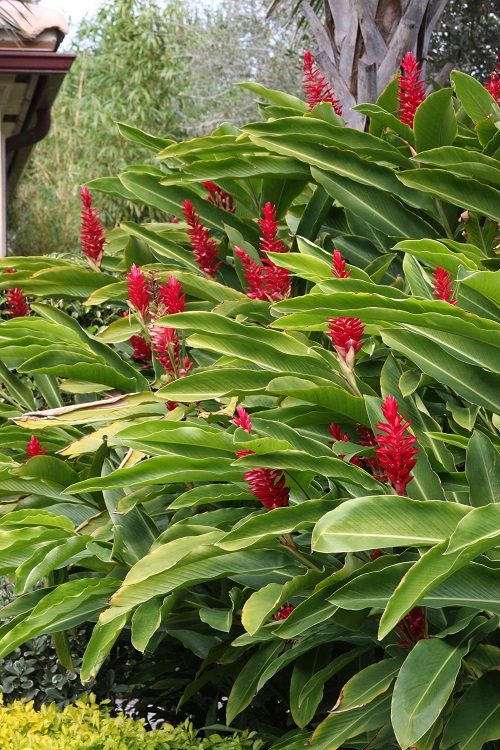Red Ginger Plant can be a beautiful outdoor specimen, standing out with its bunch red orange flowers contrasting with bright green leaves!
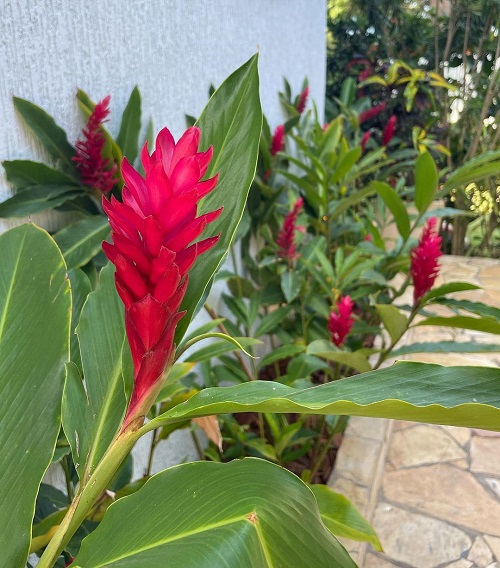
Invite the exotic allure of the tropics right in your own backyard by growing the Red Ginger Plant, a striking beauty known for its fiery red blooms and lush, green foliage. Keep scrolling to know the secrets of growing and caring for this tropical marvel, ensuring that your garden becomes the lush oasis you’ve always dreamed of.
Read Shampoo Ginger Lily Plant Care and Growing Information here
Red Ginger Plant Information
The Red Ginger Plantt, scientifically popular as Alpinia purpurata, is a tropical perennial herb that belongs to the Zingiberaceae family. It’s native to Southeast Asia, including countries like Malaysia, Indonesia, and the Philippines.
This plant displays a moderate growth rate, typically reaching heights between 6 to 12 feet (1.8 to 3.7 meters) and spreading out to about 3 to 6 feet (0.9 to 1.8 meters) in width. Its most distinctive feature is its cone-like inflorescence, which can be red, pink, or orange, surrounding inconspicuous flowers. The glossy leaves, growing up to 2 feet (0.6 meters) long, add to its lush appearance.
The Red Ginger Plant also attracts pollinators like butterflies and hummingbirds, contributing to its aesthetic appeal in gardens and floral arrangements.
Learn How to Grow Many Ginger Plants from One Ginger here
Propagating Red Ginger Plant
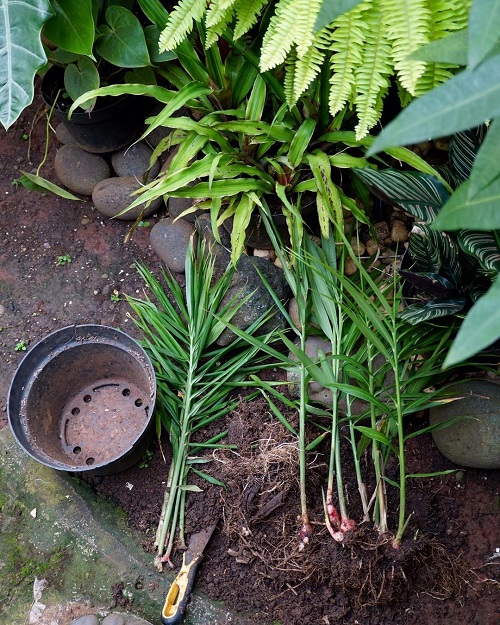
Best methods to propagate the Red Ginger Plant:
The easiest method to propagate the Red Ginger Plant is through division.
- Select a mature Red Ginger Plant that is at least a few years old. This ensures that it has established a strong root system.
- Carefully dig up the mature plant from the ground or pot, taking care not to damage the roots or rhizomes.
- Examine the plant for sections of rhizomes (underground stems) that have healthy shoots or buds. These are the parts you’ll be dividing. Gently separate these sections from the main plant, making sure each division has its roots and shoots.
- Replant the rhizome sections in well-draining soil. Make sure the shoots are just above the soil surface and water thoroughly.
Learn Panda Face Ginger Plant Care and Growing Requirements here
Best Pot Size for Growing Red Ginger Plant
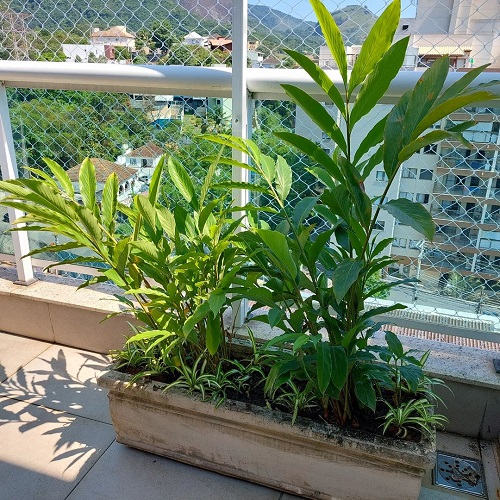
You can start Red Ginger Plants in 8-10-inch pots – which will be good for 2-4 years. After that, depending on the growth and spread, re-pot the plant into a one size bigger container than the old one.
Check out Best Ginger Varieties here
Requirements for Growing Red Ginger Plant
Location
The Red Ginger Plant thrives in bright locations with occasional direct sunlight. For the best flowers, aim for at least 4 to 6 hours of direct sunlight per day – this will result in lush foliage too!
Soil
Red Ginger Plants prefer well-draining soil with a mix of peat moss or compost for moisture retention. A suitable ratio is 2 parts potting mix to 1 part peat moss or compost.
The ideal pH range for the soil is slightly acidic, around 6.0 to 6.5, to promote robust growth. Enrich the planting site with organic matter like compost to improve soil structure and fertility if you plan to grow the plant in the garden.
Water
Water Red Ginger Plants consistently to keep the soil evenly moist but not soggy. Water deeply, allowing excess water to drain.
Before watering, check the top inch of the soil. If it feels dry, it’s time to water the plant.
Temperature and Humidity
Red Ginger Plants thrive in warm temperatures between 70°F to 90°F (21°C to 32°C). They prefer high humidity levels, ideally around 60% or higher.
Check How To Grow Ginger In Pot here
Red Ginger Plant Care
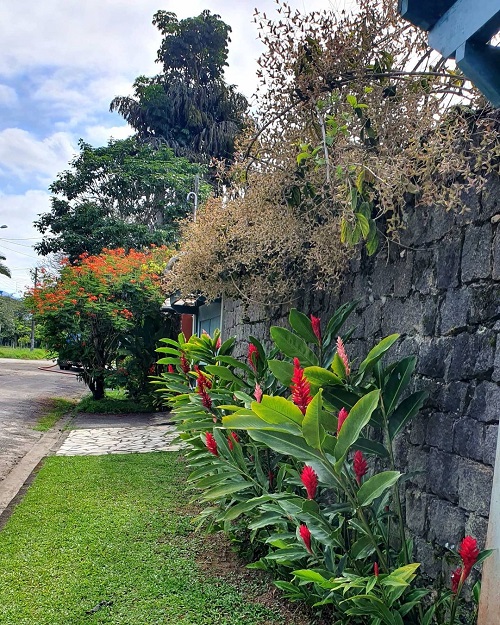
Fertilizer
Fertilize Red Ginger Plants every 4-6 weeks during the growing season (spring and summer) with a balanced liquid fertilizer, like 10-10-10 or 20-20-20 NPK ratio. For best flowers, dilute the feed to 1/2 of its strength and use it every 12-14 days.
Reduce or halt fertilization during dormancy (fall and winter).
Overwintering
Overwinter Red Ginger Plants indoors near a sunny window to protect them from cold temperatures. Reduce watering but keep the soil slightly damp to prevent drying out.
Stop fertilizing after flowering. In early spring, resume normal care, gradually reintroducing them to outdoor conditions for a successful transition.
Repotting
Re-pot Red Ginger Plants when they become root-bound or outgrow their containers, typically every 2-3 years. Choose a slightly larger pot with good drainage.
Gently remove the plant, trim any damaged roots, and place it in the new pot with fresh potting mix. Water thoroughly and resume regular care.
Pests and Diseases
Aphids: These small insects can cluster on leaves and buds, causing yellowing and distortion. Use insecticidal soap or neem oil to control them.
Mealybugs: These white, cottony pests also feed on leaves and stems. Remove them manually or use insecticidal soap.
Spider Mites: They create fine webbing and can weaken the plant. Keep humidity levels up and use neem oil or insecticidal soap to manage them.
Scale Insects: These small, armored pests attach to stems and leaves. Remove them with a soft brush or use insecticidal oil.
Fungal Leaf Spot: This disease manifests as brown or black spots on leaves due to excessive moisture. Ensure good air circulation and avoid overhead watering.
Root Rot: Overwatering or poor drainage can lead to root rot. Plant Red Ginger in well-draining soil and avoid waterlogged conditions.
Yellowing Leaves: Yellowing can be due to various factors, including nutrient deficiencies or stress. Regular fertilization and proper care can prevent this.
Check Potent Insulin Plant Benefits and Uses (Backed by Science) here
Red Ginger Plants – FAQs
Q1: How do I encourage blooming in Red Ginger?
A: Ensure it gets the right amount of light and provides a balanced fertilizer. Red Ginger typically blooms in response to warm and humid conditions.
Q2: Can I grow Red Ginger indoors?
A: Yes, Red Ginger can thrive indoors if provided with adequate light and humidity. Place it near a sunny window or use grow lights for best results.
Learn Growing Choy Sum (Yu Choy) in Pots and Gardens here
Q3: Do I need to prune my Red Ginger plant?
A: Pruning is generally not necessary unless you want to remove dead or damaged foliage. Trim any discolored or unhealthy leaves to encourage new growth.
Q4: How long does it take for Red Ginger to flower after planting?
A: Red Ginger plants typically take 1-2 years to mature and start flowering. Factors like light, temperature, and care can influence the flowering time.

